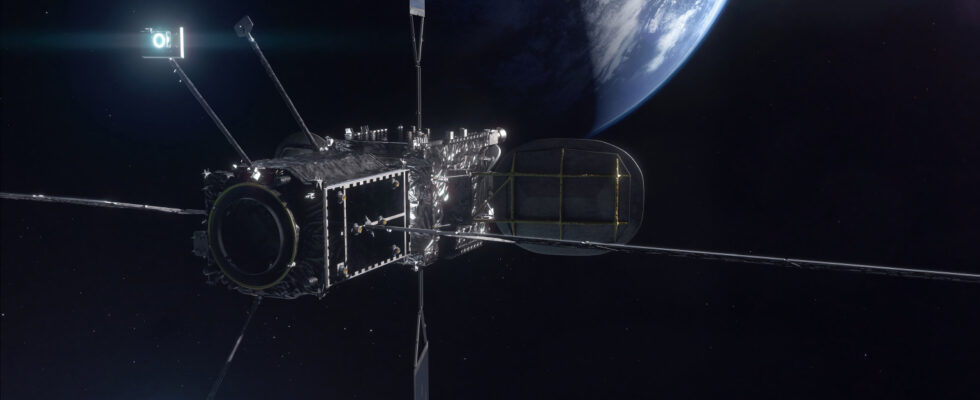Our star has been generating impressive coronal mass ejections for several days. The result was a geomagnetic storm not seen in 20 years and the Northern Lights which were visible in France, particularly on Friday evening. But in orbit, it’s also a difficult time to operate satellites…
Rarely has a sunspot been so talked about. However, “sunspot 3664” has been at the center of attention since last week. Widely visible (with a special filter or glasses adapted to eclipses) on the side of the Sun currently facing us, this spot which measures approximately 17 times the Earth’s diameter ejects large puffs of particles. The Earth’s trajectory takes us through this “geomagnetic storm”, the most significant since 2003.
The most anticipated and most accessible effect was truly remarkable this Friday, May 10, with the Northern Lights visible over a major part of France thanks to particularly favorable weather. The event of a lifetime? The intensity of the storm actually reached grade G5, which is very rare, and the visibility conditions at dawn were exceptional. Perhaps you were one of the many amateurs who photographed the phenomenon!
It’s beautiful, but it’s not just a party
In space, however, satellites have had to face, depending on their altitude, a veritable wave of charged particles, particularly for those in geostationary or GEO orbit (large telecommunications, meteorology satellites, etc.) and positioning constellations. in MEO (GPS, Galileo, Glonass, Beido, etc.). For these two groups, the teams notified a few hours before were able to temporarily turn off the most sensitive equipment, but also direct their satellites to protect this or that electronic box as much as possible. However, if the satellites were poorly shielded or protected, they could have been damaged by this type of event.
No major operator has yet publicly declared any particular problem, but it is still too early to know what the real impact has been (manufacturers are planning shielding and redundancies, but some units are more vulnerable than others). ‘others). However, there were some drops in accuracy, particularly on GPS, noticed over the weekend due to tractor deviations. The John Deere brand has a positioning system which must be very precise, and users have noted cuts.
Limited effects, but effects nonetheless
In low orbit, the vast majority of satellites are protected by the Van Allen belts, but there have been some disturbances, particularly for large constellations like Starlink (which has almost 6,000 satellites). This Sunday, May 12, SpaceX communicated, however, to explain that the situation had returned to normal, and last night the company even sent a new batch of 23 satellites into orbit. Satellite operators have generally remained silent on the event. It is perhaps the insurers who saw their inboxes fill up this Monday morning…
Finally, for the debris in orbit, this eruption was even relatively good news. Indeed, in response to a solar storm of this type, the level of particles in the very upper atmosphere increases, which generates increased braking for vehicles and debris at low altitude. Certain old items will “pollute” the orbit for a shorter period of time and burn up more quickly.
Finally, if you missed the dawns this weekend, there is unfortunately little chance of catching up. Indeed, the Sun also rotates on its axis, and therefore the famous sunspot which generates this storm no longer faces us. From this evening of May 13, it will no longer even be observable! Even though our star is currently in a peak of activity (the cycle lasts about 11 years), there is very little chance that this boon will occur again in the near future. But you never know!
Source : ArsTechnica

5